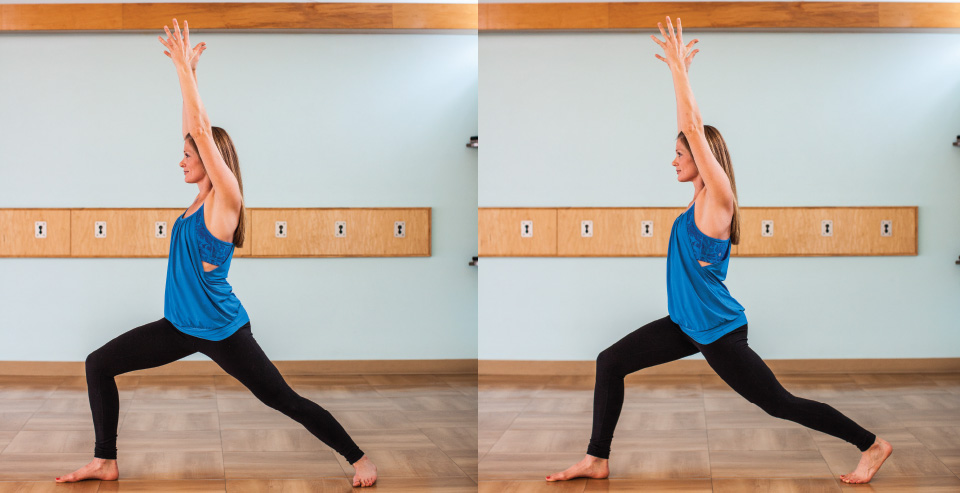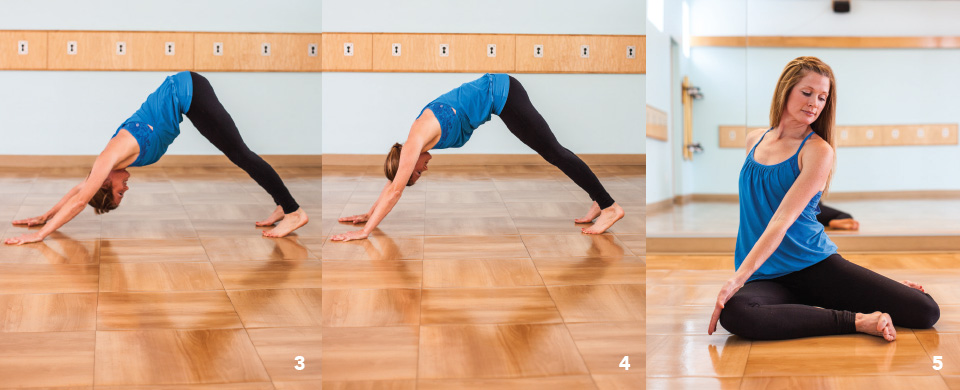The Power of Yoga in Postural Restoration

As a physical therapist, I’m not alone among rehabilitation specialists in feeling that yoga can be both tremendously beneficial to some but frighteningly dangerous for others. I’ll recommend yoga in a heartbeat to many of my patients, but explain to some that yoga may not be great for their particular issues. Why not? Hyper-mobility, hyper-flexibility, and hyper-inflation can be too much of a good thing. Some folks don’t need more of it; they need to learn how to control it.
Over the last century, Western culture has diversified yoga from its original form. Traditional yoga emphasizes the blending of mind and body. These days there are many other subsets of yoga where the spiritual takes a backseat to the physical. The two may become more and more divergent and yoga (at least to me) begins to look more like a sport than a discipline. For some, yoga moves away from a practice of self-improvement and self-realization to one in which resolving one’s physical imperfections becomes the singular goal. I’m all for goal-setting and having improved physical health, but when it comes to yoga, there need to be boundaries—literally and figuratively—in many people’s practice.
Injuries as a result of yoga are probably overblown. Fervent supporters of yoga might address these reports as being a result of the meteoric rise in the number of people practicing within the last couple of decades. Perhaps they fall under the umbrella of the risks we all take by just getting out of bed in the morning. After all, there are inherent dangers in any recreational endeavor.
My perspective is that of a physical therapist who sees many yoga practitioners (and teachers) as patients. Their injuries are varied (though there are some common ones) and they are often a direct result of their yoga practice. They range from simple shoulder impingement to complex hip instability. We can almost always trace the issue directly back to poses that are being done incorrectly or in a manner that is beyond their joint or soft tissue’s physiological range of motion. They usually have little understanding that every joint has a neutral axis of rotation and many times there has been an overemphasis of moving the joint in only one direction. Simple modifications, a respect for neutrality, and an understanding of common human postural patterns like inherent asymmetry can usually correct these issues.
A fusion of modern, Western science, and Eastern tradition can help promote yoga as a powerful rehabilitative tool and limit the incidence of injury. At the very least, those passionate about yoga and are unable to continue their practice should seek out individuals versed in yoga, human biomechanics, and rehabilitative medicine. There are many yoga teachers who have programs that are mindful of moving their students within a more conservative range of motion while still realizing yoga’s intended physical and mental benefits.
Stacey Gilmore* of Counterpose Wellness has one such program. As a physical therapist and certified yoga instructor, Stacey utilizes the concepts of the Postural Restoration Institute® (PRI) to harmoniously blend traditional yoga values within the context of never moving beyond your limits. PRI principles emphasize that the body is not symmetrical and human anatomy and physiological function are not (and never will be) exactly the same on either side of the body. There are predictable patterns of imbalanced posture and movement that are driven by the asymmetrical nature of brain function and respiratory mechanics. An unintended consequence of yoga is that by treating the body as if it were symmetrical, patterns that are potentially damaging are reinforced. We now understand that if the body is repetitively forced to move beyond the physiological limits of these patterns, the susceptibility to injury is greatly increased. Stacey explains that her PRI-inspired yoga program “teaches boundaries that prevent moving into pathological positions.”
The concepts of PRI easily integrate into yoga, as both place heavy emphasis on linking breath with movement and posture, appreciating that homeostasis and well-functioning physiological systems require proper breathing mechanics. PRI-style yoga begins and ends with an ability to maintain a stable core to control rib and diaphragm position so that airflow reaches all areas of the thorax. Movement integrity is then built around this neutral axis of range of motion between the ribs and pelvis.
Finally, yoga classes are often structured in a way that reflect life as ever-changing, filled with ups and downs. Our bodies get stressed and hopefully can quickly recover. Humans thrive on this variability unless we get stuck in one extreme. Regulation of breath and optimization of airflow is a major goal in yoga as it is with PRI, since this is one of the ways that we can ensure balance between our sympathetic and parasympathetic nervous systems.
Here are a few examples of Postural Restoration-inspired modifications to some common poses.
Warrior 1 (Figure 1) is omitted due to the tendency for the left hip to overextend if put into external rotation while the pelvis is anteriorly rotated and the back is overextended. This pose is replaced with Crescent Lunge (Figure 2), which involves a Low Lunge and an Upward Salute. The emphasis here is on maintaining abdominal tone and a neutral pelvic and spine positions. The left hip is slightly extended but kept in neutral rotation.

Downward-Facing Dog (Figure 3) is modified to reduce an overextension of the entire spine (Figure 4). The lower back has a more neutral curve; shoulders aren’t put into end-range elevation; and abs are felt through the entire breath cycle so that airflow can expand the posterior rib cage.
Bharadvajasana (Figure 5) is a great example of PRI-inspired yoga. It will likely be done only to one side to help balance the asymmetry of the human body. Right hip is externally rotated, left hip is internally rotated, and the right chest wall is oriented to the right to optimize airflow into it.
*Stacey Gilmore teaches yoga from 12–1 p.m. on Fridays at Yoga Illuminated and at Luke's Locker every other Sunday (check her schedule here).






